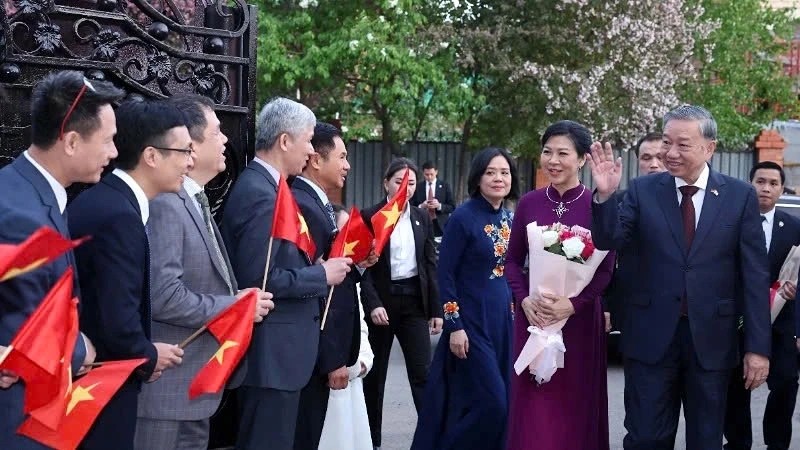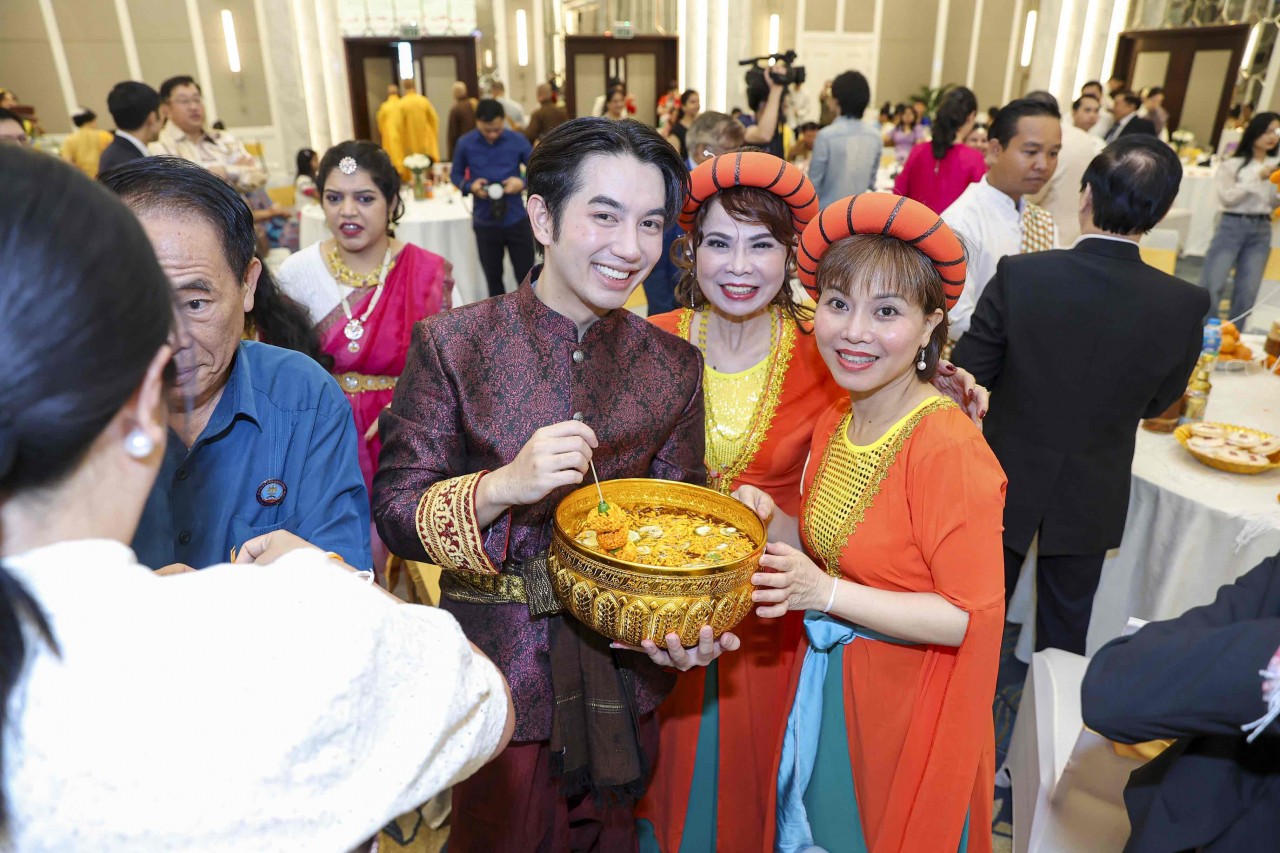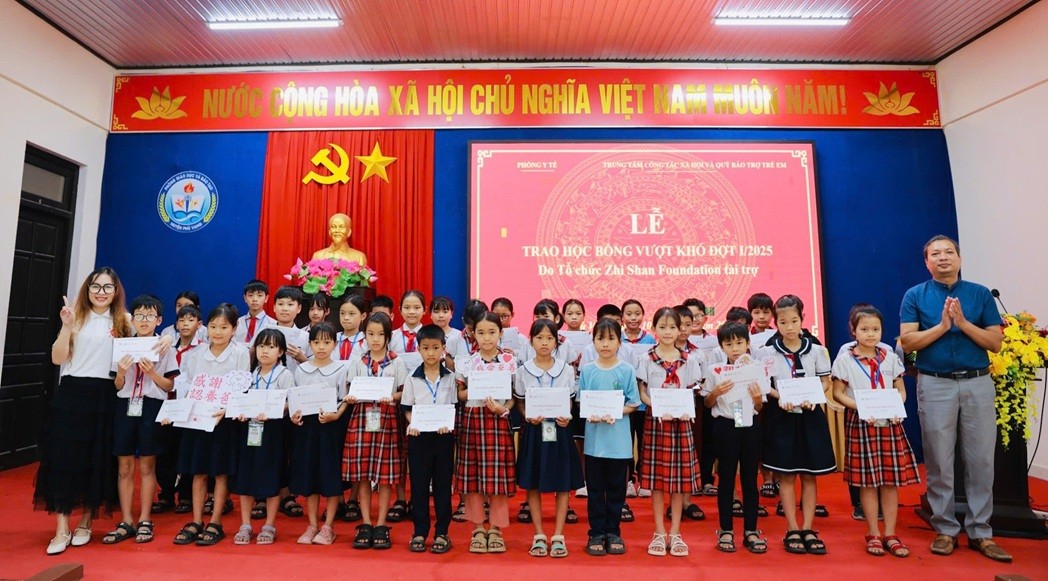Lowering Neu Pole, Opening Seal to Celebrates New Year
Marking the end of the Lunar New Year holiday, on the morning of the 7th day of Lunar New Year (January 28), Hue Monuments Conservation Center held a ceremony to lower the Neu pole and open the seal to greet the new year at The Mieu Temple and Trieu Mieu Temple - Imperial City.
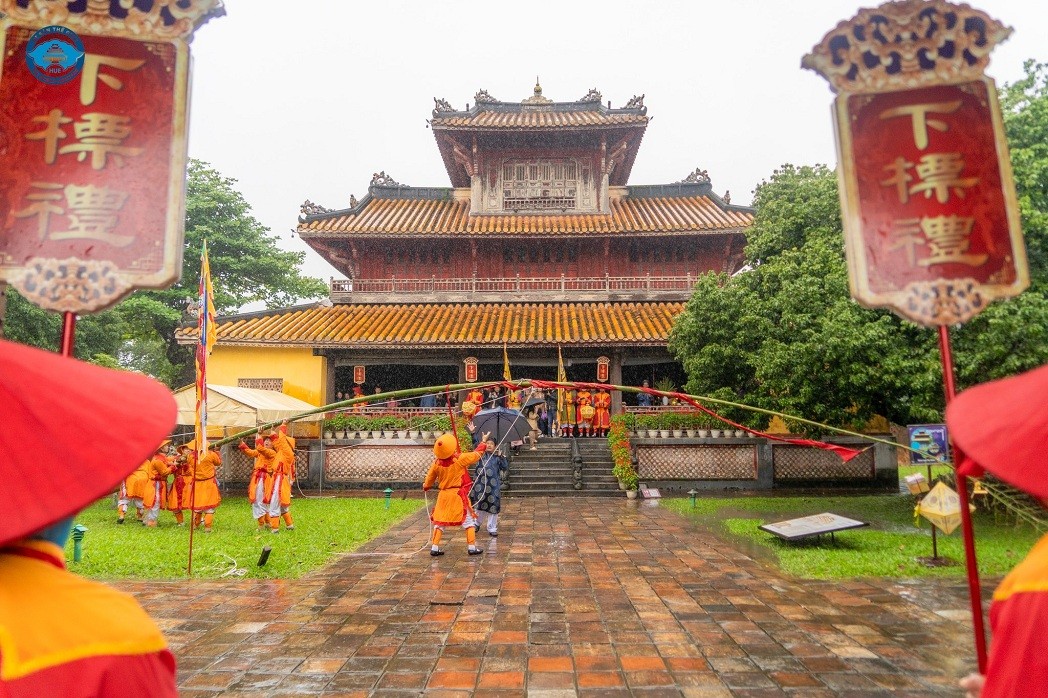 |
| According to Director of the Hue Relics Preservation Centre Hoang Viet Trung, under the Nguyen Dynasty, the rituals marked the end of the Lunar New Year holiday and the start of work and normal activities. Photo courtesy of the centre |
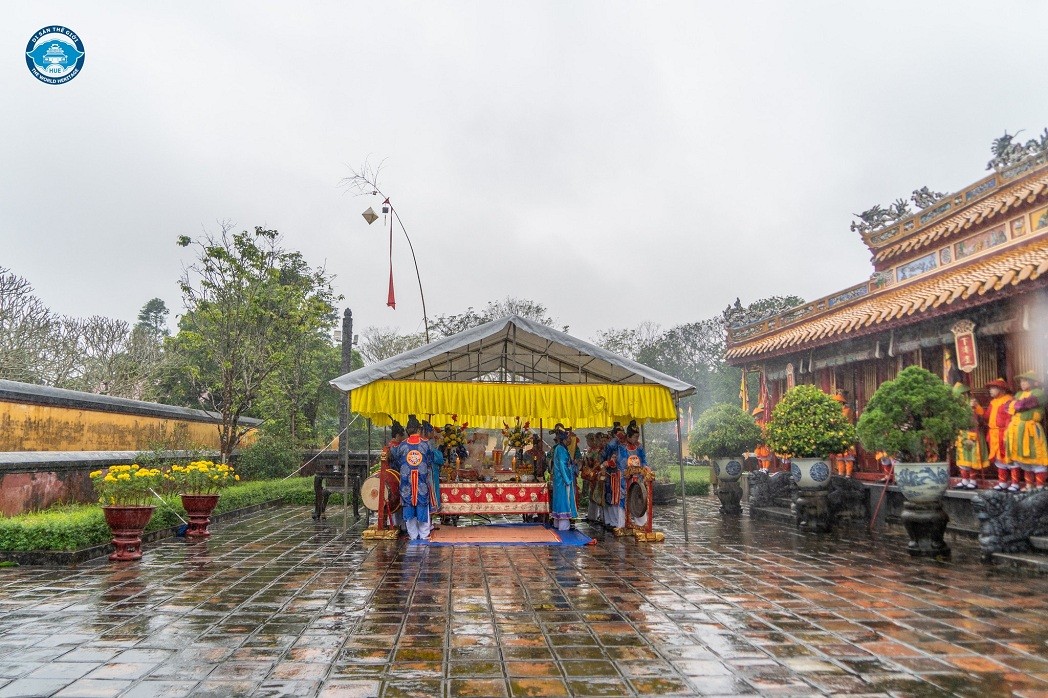 |
| The Neu pole was erected on the 23rd day of the 12th lunar month, marking the beginning of Tet. It coincides with the day when the Kitchen Gods are believed to ride a carp to Heaven to report on events from the past year. Photo courtesy of the centre |
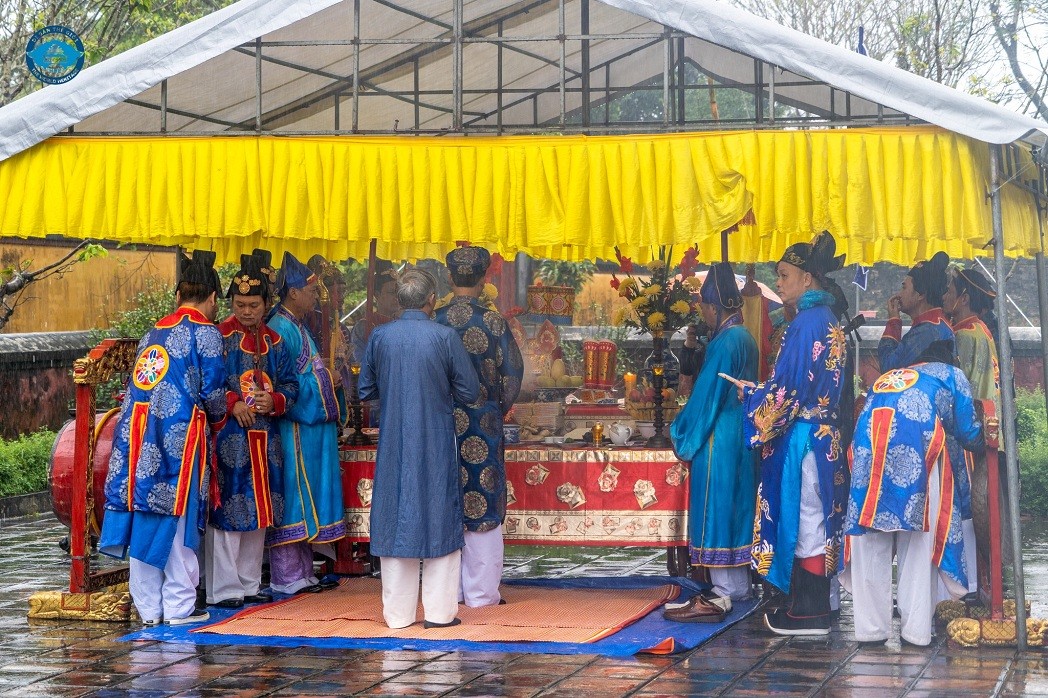 |
| During 143 years of its reign (1802 – 1945), the Nguyen Dynasty held an annual ceremony to plant the Neu at the Imperial Citadel. Photo courtesy of the centre |
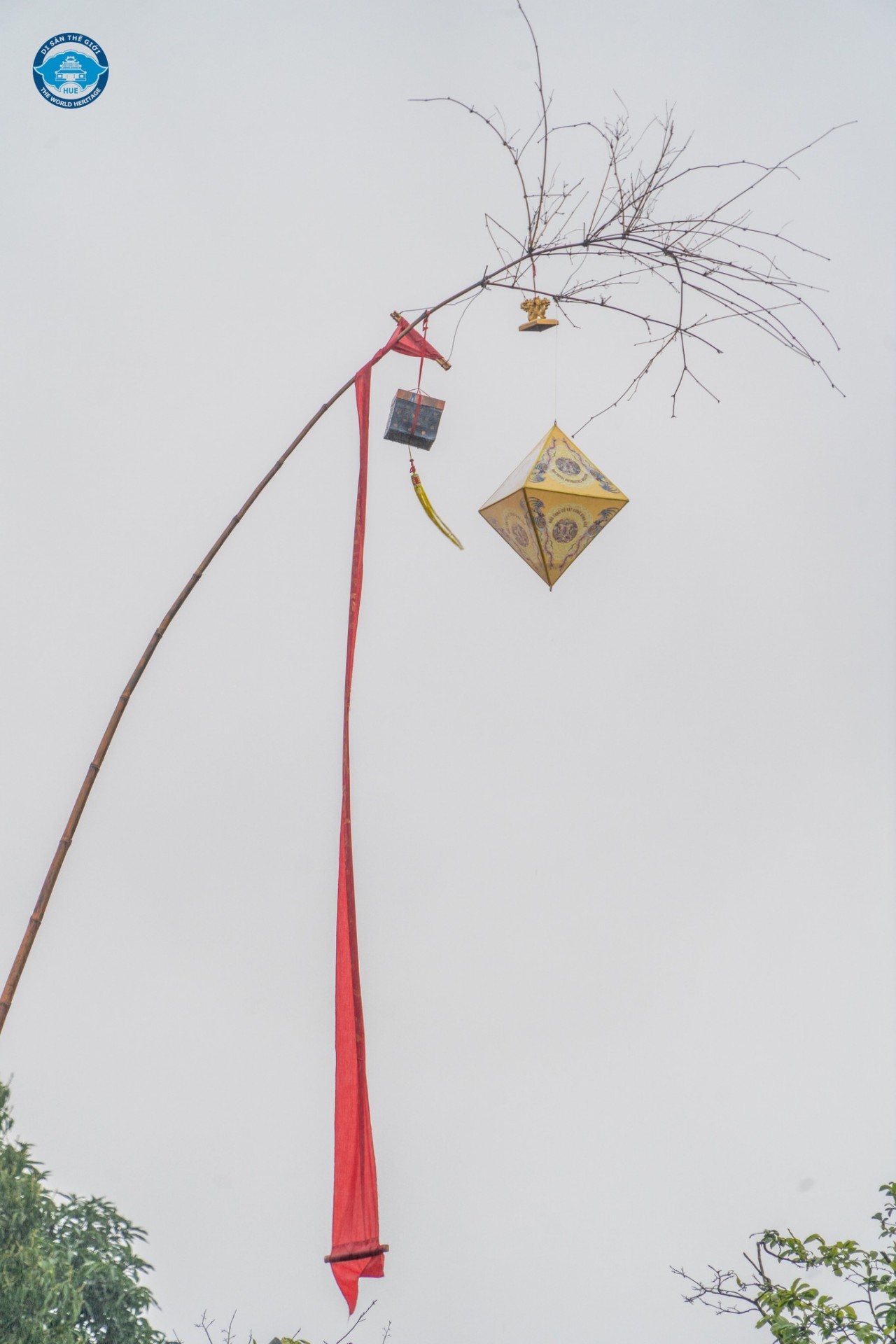 |
| The pole carried ritual items on its top, like a royal seal, a paper scroll and pen, which implied that the royal court stopped working during Tet. After the royal ceremony, ordinary people would erect their own Neu and start celebrating Tet. Photo courtesy of the centre |
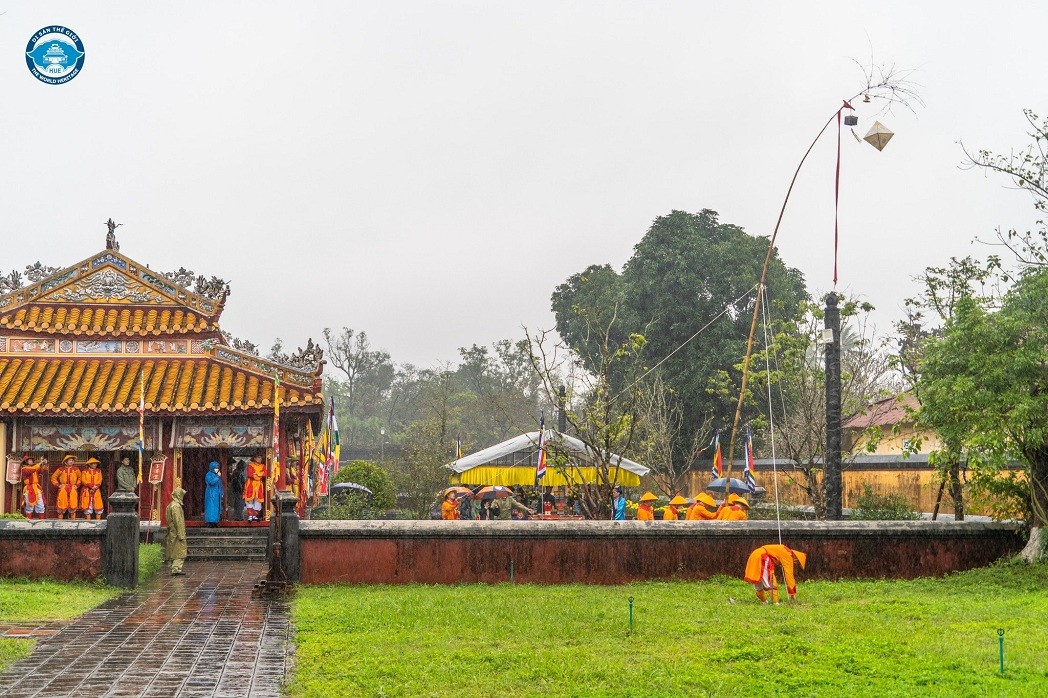 |
| The Neu was intended to ward off ghosts and demons from entering the community during Tet, and guide the spirits of ancestors on the way home for the Lunar New Year festival. The custom is also practiced in some Asian countries besides Vietnam. Photo courtesy of the centre |
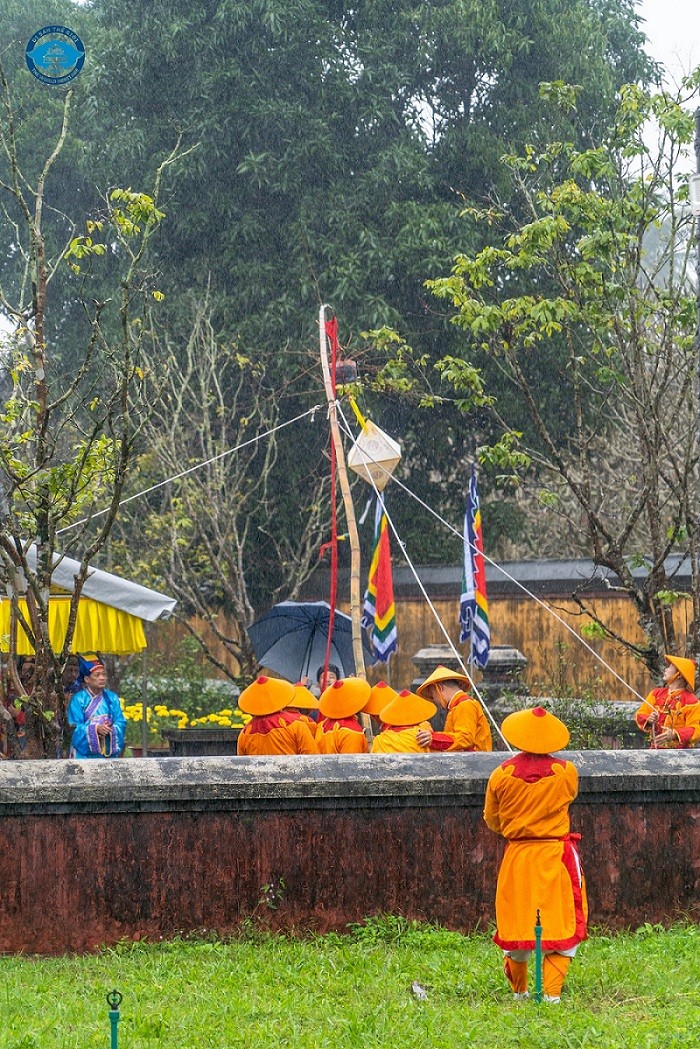 |
| It was taken down on the seventh day of the first lunar month to mark the end of the Tet celebration. Photo courtesy of the centre |
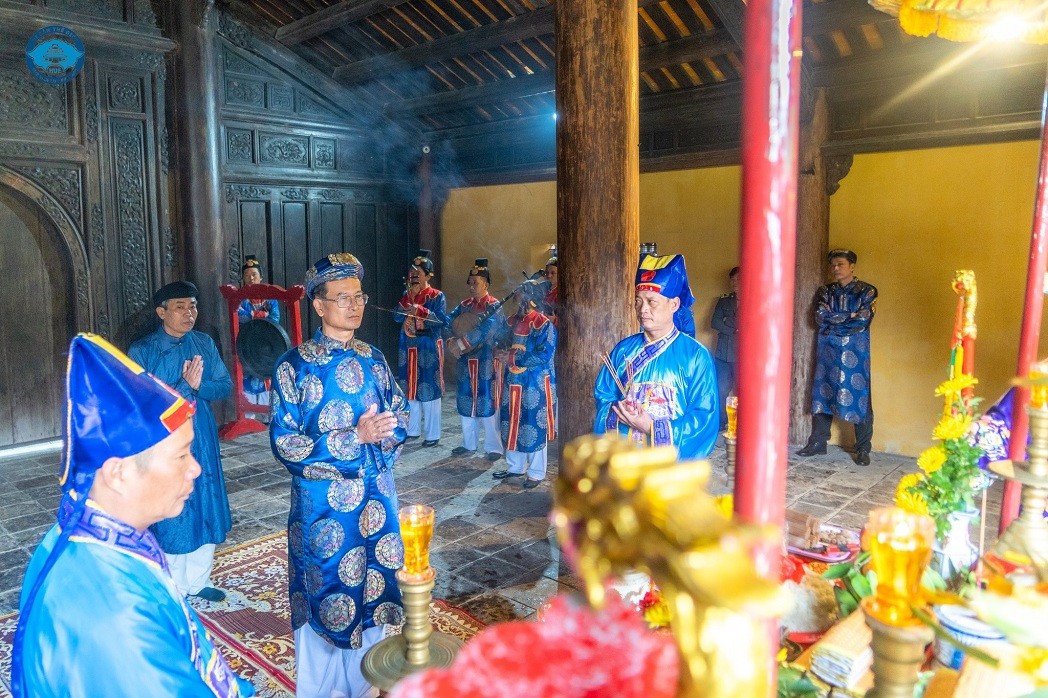 |
| The seal opening marked the start of a new working year of the ancient central administrative system with the hope that the whole year will be smooth and successful and the country will be peaceful and prosperous. Photo courtesy of the centre |
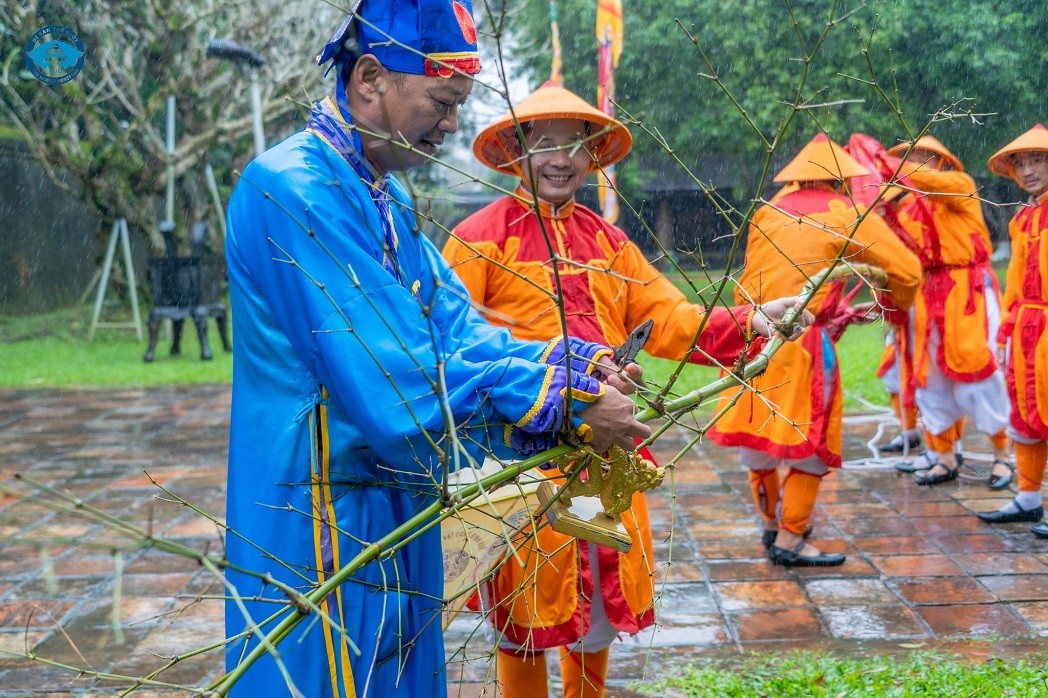 |
| Kim an (the restored golden seal) was taken down from the top of the Neu pole with four words “Phu - Tho - Khang - Ninh”, which symbolized Prosperity, Longevity, Good health, and Peace. Photo courtesy of the centre |
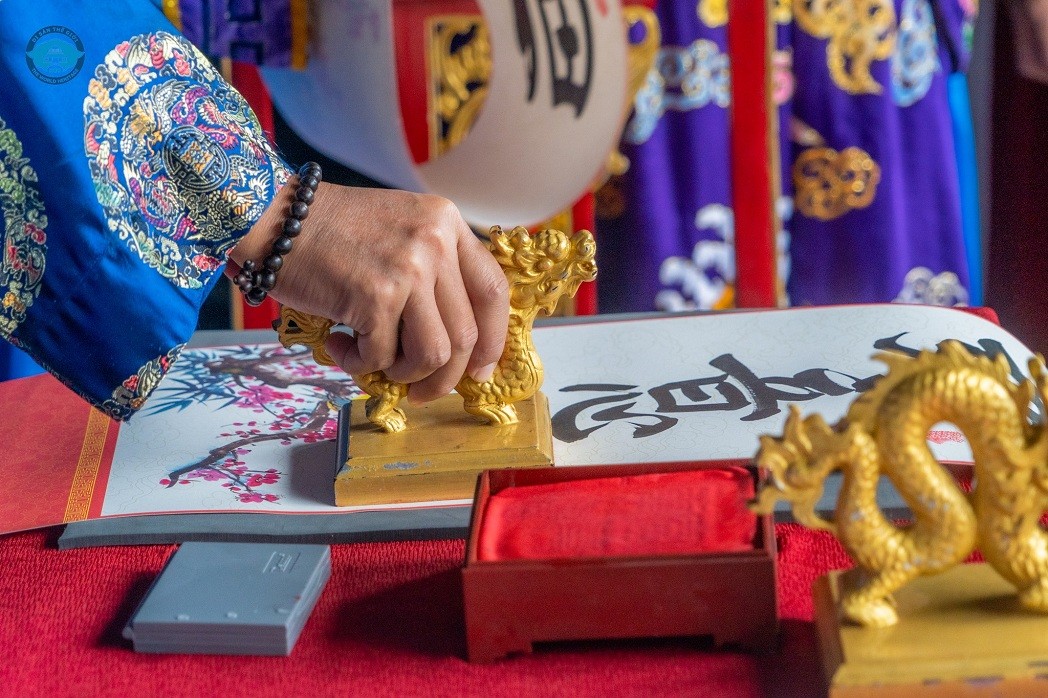 |
| Ancient people perceived that these words were wishes for the peace, auspicious start and longevity for the country, and luck and prosperity for the people. Photo courtesy of the centre |
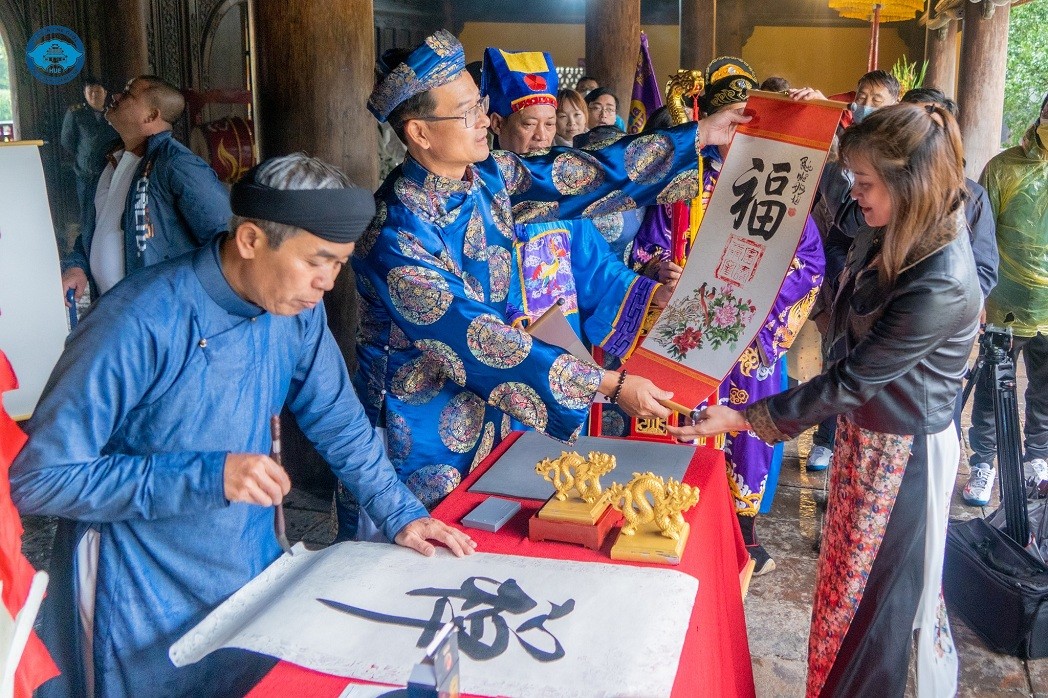 |
| At the seal opening ceremony, Hoang Viet Trung, director of Hue Monuments Conservation Center, used the seal to stamp on the sheets on which the calligraphic words were carved, such as Phuc (Happiness), Loc (Prosperity), Tho (Longevity), Cat tuong (Good fortune), Binh an (Peace). Photo courtesy of the centre |
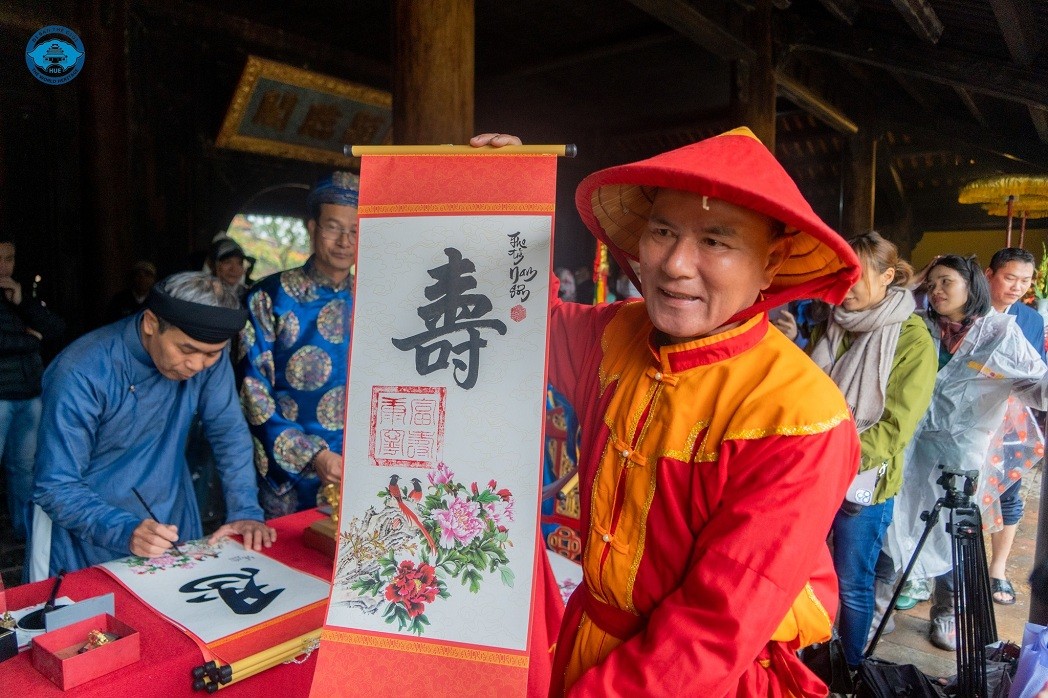 |
| These calligraphic letters were given to visitors as wishes for good things and luck in the new year. Photo courtesy of the centre |
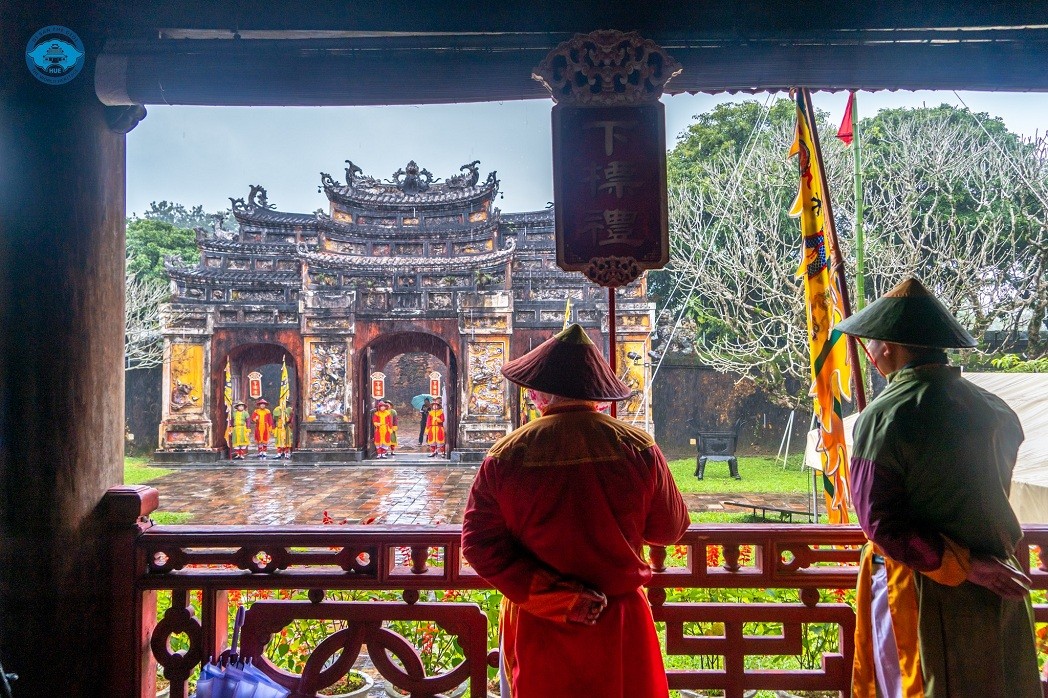 |
| The traditional rituals of the Nguyen Dynasty have been revived for many years at the Hue imperial relic site. Photo courtesy of the centre. Photo courtesy of the centre |
During the seven-day Tet holiday from January 20-26, the Hue imperial relic site welcomed over 66,000 visitors, including 12,848 foreigners, earning nearly VND 5 billion (USD 23,060).
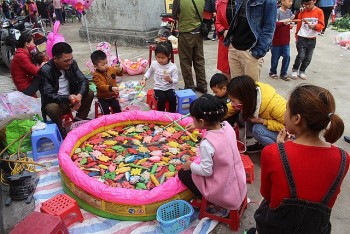 | Buy Some Luck at a Traditional, Vietnamese Spring Market In the early days of the spring season, many localities have the custom of opening unique markets, where tourists from everywhere in Vietnam flock here ... |
 | Annual Tree Planting Programme Launched for Green Vietnam The Prime Minister launches a tree planting festival in Ba Vi on New Year of Cat. |
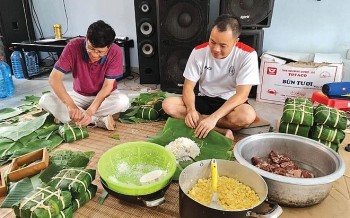 | Overseas Vietnamese Around the World Celebrate Lunar New Year No matter where they live or work, Vietnamese people around the world appreciate the homeland traditions of Tet. |
Recommended
 Viet's Home
Viet's Home
“Global Vietnamese Singing 2025” - Connecting Hearts Longing for Homeland
 Viet's Home
Viet's Home
Vietnam’s People's Public Security Force Actively Contributes to UN Peacekeeping Operations
 Viet's Home
Viet's Home
HAUFO Enhances Competence of People-to-People Diplomacy Personnel
 Viet's Home
Viet's Home
Hands that Reserve Da Long Brocade Craft
Popular article
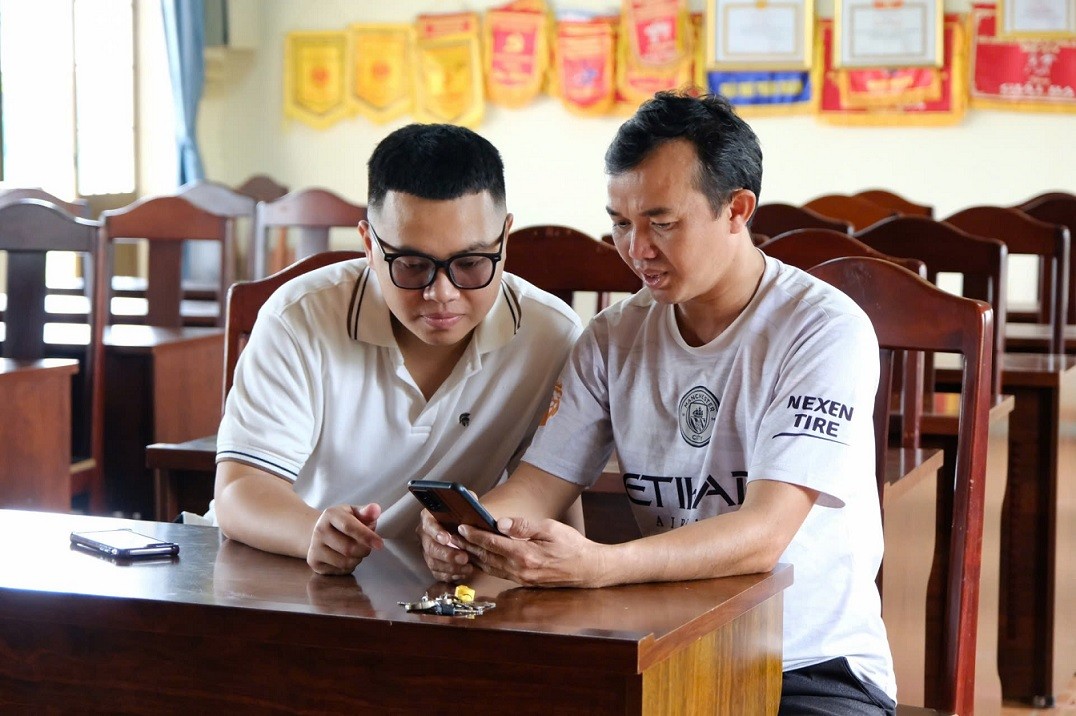 Viet's Home
Viet's Home
Da Rsal – How Digital Transformation Reshape a Poor Commune
 Viet's Home
Viet's Home
Vietnam Classified as “Low Risk” Under the EU Anti-Deforestation Regulation
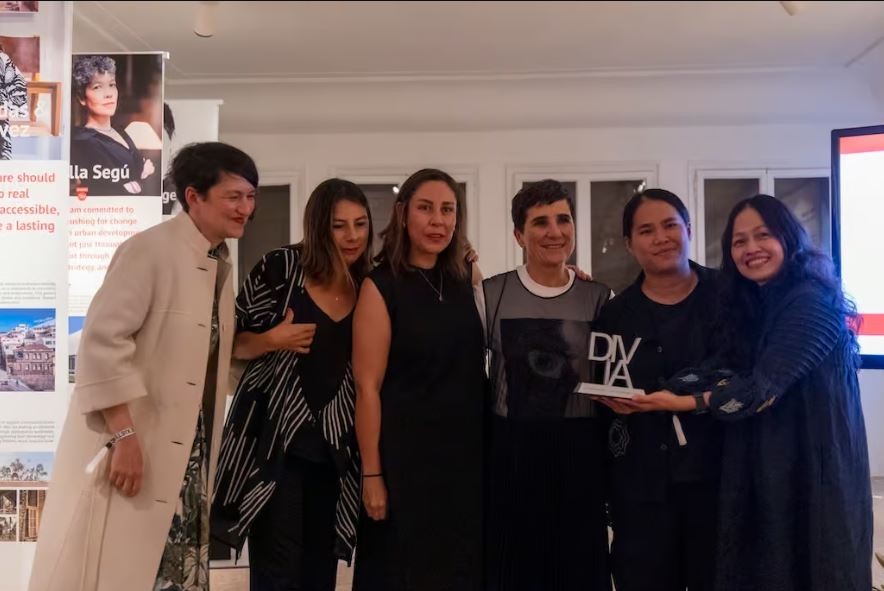 Viet's Home
Viet's Home
Vietnamese Architect Wins the Diversity in Architecture Award 2025
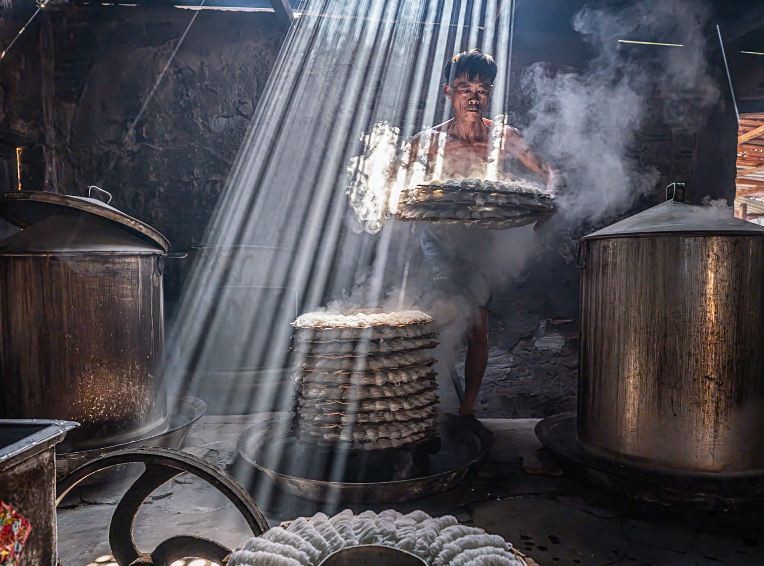 Viet's Home
Viet's Home




